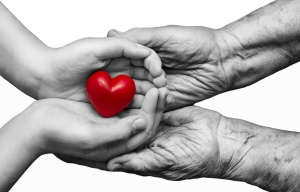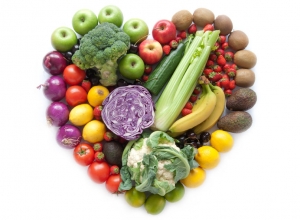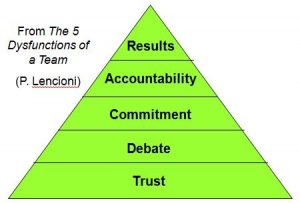Smartphones Could Be a Boon to Heart Health Research
Smartphones might revolutionize cardiac research by giving instant, accurate insight into the physical activity of people using them, a new study finds.
"People check these devices [an average of] 46 times a day," noted study senior author Dr. Euan Ashley, an associate professor of cardiovascular medicine at Stanford University in Palo Alto, Calif.
"From a cardiovascular health standpoint, we can use that personal attachment to measure physical activity, heart rate and more," he said in a university news release.
In the study, Ashley's team enlisted subjects via a free iPhone app called MyHeart Counts.
The researchers enrolled more than 47,000 Americans across all 50 states, and were able to track data about the physical activity of nearly 5,000 participants who took a six-minute walking fitness test.
"The ultimate goals of the MyHeart Counts study are to provide real-world evidence of both the physical activity patterns most beneficial to people and the most effective behavioral motivation approaches to promote healthy activity," said study co-lead author Dr. Michael McConnell. He's a professor of cardiovascular medicine at Stanford.
Why is it beneficial to get numbers from a smartphone? Because people often overestimate how much they exercise when they are simply asked in a survey, the researchers said.
"Traditional research on physical activity and cardiovascular health has been based on people writing down what they remembered doing," McConnell said. "Mobile devices let us measure more directly people's activity patterns throughout the day."
The researchers found that people who were active throughout the day, and not just once for a fairly short session, were healthier on the cardiac front. And those who mostly exercised on the weekend and went to bed early tended to be healthier.
One heart specialist who reviewed the new study believes the smartphone initiative has merit.
"It helps health care providers and patients alike in monitoring physical activity, setting goals, and achieving desired results," said Dr. Satjit Bhusri, a cardiologist at Lenox Hill Hospital in New York City. "As a result, we have up-to-date information on our patients' progress and prevention of heart disease."
Dr. Stacey Rosen is vice president of Northwell Health's Katz Institute for Women's Health in New Hyde Park, N.Y. She believes that tracking people via a smartphone could greatly expand research opportunities.
Right now, she said, "there are challenges to large-scale research initiatives -- cost, staffing and recruitment and retention of subjects."
"Enhancing the ability of the almost ubiquitous smartphone, to help us better understand ways to modify behavior that impact positively on heart disease risk, is a major game-changer," Rosen said.
The study was published Dec. 14 in JAMA Cardiology. There's more on keeping your heart healthy at the American Heart Association.
SOURCES: Satjit Bhusri, M.D., cardiologist, Lenox Hill Hospital, New York City; Stacey Rosen, M.D., vice president, women's health, Northwell Health's Katz Institute for Women's Health, New Hyde Park, N.Y.; Stanford University, press release, Dec. 14, 2016; JAMA Cardiology, Dec. 14, 2016
Originally published by: consumer.healthday.com
The Mystery of Human Blood Types
The ABO blood group evolved at least 20 million years ago, but scientists still don't understand the purpose of blood types
To Keep the Weight Off, Keep Tracking Your Diet
NEW ORLEANS — Keeping track of the foods you eat is an important strategy for weight loss, but continuing to monitor what you eat is also important to prevent regaining that weight. Now, a new study finds that stopping food tracking is linked to regaining weight.
In order to prevent re-gaining weight, people should make an effort four months after starting a diet to refocus on food tracking, according to the study, presented here Sunday (Nov. 13) at the American Heart Association's annual meeting called the Scientific Sessions.
The researchers found that people tended to stop dietary monitoring after about four months, and that this was followed by regaining weight, said Qianheng Ma, a public health researcher at the University of Pittsburgh and the lead author of the study.
The effects of food tracking, or "dietary self-monitoring," on weight loss have been well-studied, and the technique is a key component of what researchers call the "standard behavioral treatment" for people who want to lose weight and keep it off, Ma told Live Science. This type of treatment is the most effective non-medical approach to weight loss, according to the study.
In the study, the researchers looked at data from 137 people who had participated in a one-year weight loss intervention called EMPOWER. The majority of the people in the study were white women. The participants were, on average, 51 years old and had a BMI of 34.1. (People with a BMI of 30 or higher are generally considered obese.) The people in the study were asked to weigh themselves regularly with a digital scale that uploaded data in real time and to monitor their diet using a smartphone app.
Although everyone in the study initially lost weight, nearly three-quarters of the people in the study ultimately regained some of that weight. In addition, 62 percent of the participants stopped tracking what they were eating at some point during the study.
The researchers found that a greater percentage of the people who regained weight had stopped tracking what they ate, compared with those who were able to maintain their weight.
The average time that people tracked their diet before they stopped was 126 days — in other words, they were about four months into their diet when they stopped, Ma told Live Science. It's unclear why food tracking stopped at this point, she added.
People did not begin gaining weight immediately after they stopped tracking what they ate, the researchers noted. Rather, people started to gain weight, on average, about two months after they stopped tracking their food, the study found.
Now that the researchers have identified the point at which people tend to stop tracking their food, they intend to study whether strategically reminding people to keep tracking will help them to keep the weight off, Ma said.
The new findings have not been published in a peer-reviewed journal.
Originally published on Live Science.
http://www.livescience.com/56852-dietary-self-monitoring-weight-maintenance.html
Why Fruits and Vegetables Are Vital
Eating a diet rich in fruits and vegetables is important for good health. Find out why experts say Mother Nature's bounty packs better nutrients than supplements.
If we are what we eat, then many of us must be tripping all over the place due to a lack of balance. That's because the average American eats about three servings of fruits and vegetables per day — a stark contrast to the Department of Health and Human Services (HHS) and the U.S. Department of Agriculture's (USDA) new guidelines stating that we should be eating 5 to 13 servings of nature's best, depending on the number of calories you need.
So if we want to grow to be strong like Popeye, why can't we just down some supplements instead of devouring a pile of spinach?
Nutrients in fresh fruits and vegetables work together. Kristine Wallerius Cuthrell, MPH, RD, a research nutritionist and senior project coordinator for Hawaii Foods at the Center on the Family at University of Hawaii at Manoa, says that in the past five to 10 years, many large research studies have found that vitamin supplements don't provide the benefits that foods do. The 2005 Dietary Guidelines for Americans, created jointly between HHS and USDA and reviewed every five years, say that foods are the best sources of nutrients because they contain naturally occurring ingredients, like carotenoids and flavonoids.
"In addition to the substances we are aware of, there are many present in fruits and vegetables that have yet to be discovered. Food and the nutrients they contain aren't consumed singly, but with each other. As such, they may act in synergistic ways to promote health," Cuthrell says. For instance, eating iron-rich plants, like spinach, with an iron-absorbing enhancer, like the vitamin C in orange juice, is great for people who don’t get enough iron (typically young women).
Fruits and vegetables may prevent many illnesses. Eating fruits and vegetables may reduce your risk of cardiovascular diseases, stroke, type 2 diabetes, and even some forms of cancer. The Nurses' Health Study and Health Professionals Follow-up Study examined nearly 110,000 people over the course of 14 years. Part of the study revealed that the more fruits and vegetables people ate daily, the less chance they would develop cardiovascular diseases.
The relationship between fruits and vegetables and cancer prevention has been more difficult to prove. However, recent studies show that some types of produce are associated with lower rates of some types of cancer. For example, the World Cancer Research Fund and the American Institute for Cancer Research suggest that mouth, stomach, and colorectal cancers are less likely with high intakes of non-starchy foods like leafy greens, broccoli, and cabbage. Though studies have been mixed, lycopene, a carotenoid that gives tomatoes their red color, may help stave off prostate cancer.
Fruits and vegetables are great for watching your weight. They’re low in fat and calories, and loaded with fiber and water, which create a feeling of fullness. This is particularly helpful for dieters who want more filling calories. Plus, that fiber helps keep you “regular.”
Fruits and Vegetables: Get Your Fill
When adding fruits and vegetables to your diet, remember that variety is the spice of life. It's important to eat produce of various colors because each fruit or vegetable offers a different nutrient — think of it as nutritional cross-training. Trying new foods can be exciting, and be sure to sample every color in the produce rainbow.
The right number of servings of fruits and vegetables for you all depends on your daily caloric intake needs. A good way to find out how many servings you should be eating is by using the CDC's online serving calculator. Or make things even simpler by eating a fruit or vegetable at every meal and snack.
Don't let season, accessibility, or cost affect your fruit- and vegetable-friendly diet. If finding fresh produce is difficult, choose frozen, canned (low-sodium), or dried varieties. Also, 100 percent juice counts toward your servings, though it doesn't offer the full fiber of whole fruit.
The power of prevention may lie in a salad bowl or a plate of fruit. When we take advantage of produce, our bodies return the favor by reducing our risk of developing various illnesses.
Originally Published by: Everydayhealth.com By Melanie Winderlich Medically Reviewed by Pat F. Bass, III, MD, MPH
http://www.everydayhealth.com/diet-nutrition/101/nutrition-basics/fruits-and-vegetables.aspx
No organization’s culture is perfectly healthy.
But there are some organizations where the culture is toxic — way beyond the “normal dysfunctional” level. These cultures tolerate or encourage behaviors that suck the life out of people. And no matter how great a business’s strategy, marketing, and financial operations are, a toxic culture will poison business success.
How do you know if your company culture is toxic?
Here are a few signs:
Not many teams are great at both results and relationships.
Patrick Lencioni, in The Five Dysfunctions of a Team, lays out a simple but powerful framework for high-performance teaming that blends results and relationships. How does your team measure up?
Legal and regulatory changes—more than new laws—are driving the need for company policy adjustments, revised plan documents and updated employee handbooks for 2013 by U.S. employers.

Upcoming Events
Quarter 1 2019: Maintaining a Healthy You!
January - Physical Health
The importance of regular physical activity in our daily lives.
February - Mental Health
Encouraging support services and resources for those who need it. You are not alone.
March - Workplace Health
Tips for how to balance your health with work.
Coming Soon - Quarter 2 2019
Think Spring!




